Mango is a great food for worms in your worm bin. Whether you have red wigglers or any other composting worms you can feed them mango flesh, skin and seeds. Worms will break down mango fruit over around 1-2 weeks. They like to let it break down for a few days before eating it.
This article will explore all you need to know about feeding mango to worms in a worm bin. Find out how to prepare it and how to avoid attracting ants and flies.

How to cut up mango for worms
Cutting up mango to eat is easy. Remove the mango cheeks and then slice the rest of the flesh off the edges of the mango. You can slide your knife between the mango skin and the flesh and eat the delicious mango. Use a spoon to scoop out the rest of the flesh from the cheeks and this will just leave the skin.
The leftover skin and seeds make perfect worm food you can slice the skin up into small pieces which makes it easier for the worms to eat. You can also put the whole skin that is taken off the flesh and it forms a little hollow that worms like to squirm into.

Feeding worms mango skin
Mango skin is soft and will be broken down quickly by the worms. You can place it on top the worm castings or dig it down a little which will help to avoid flies and ants. The sweet skin and flesh can attract ants so burying it down can help to avoid this.
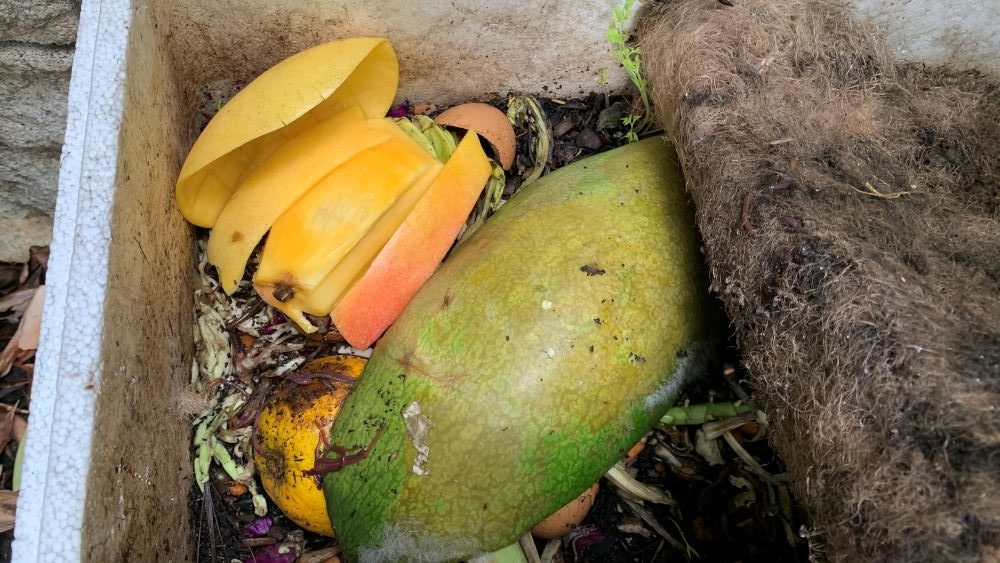
Feeding worms mango seeds
Mango seeds will take longer than all other parts of the mango to be broken down by the worms. The worms will start by eating of the extra mango flesh and the seed will start to dry out. It can take a while for the seed to break down completely but eventually it will disappear.
You may find white seed pieces in your bin but these can be placed into your garden bed without an issue. Mango seeds can sprout if they get the chance but placing a worm blanket on top usually will stop the light from coming in and for the seed from growing.
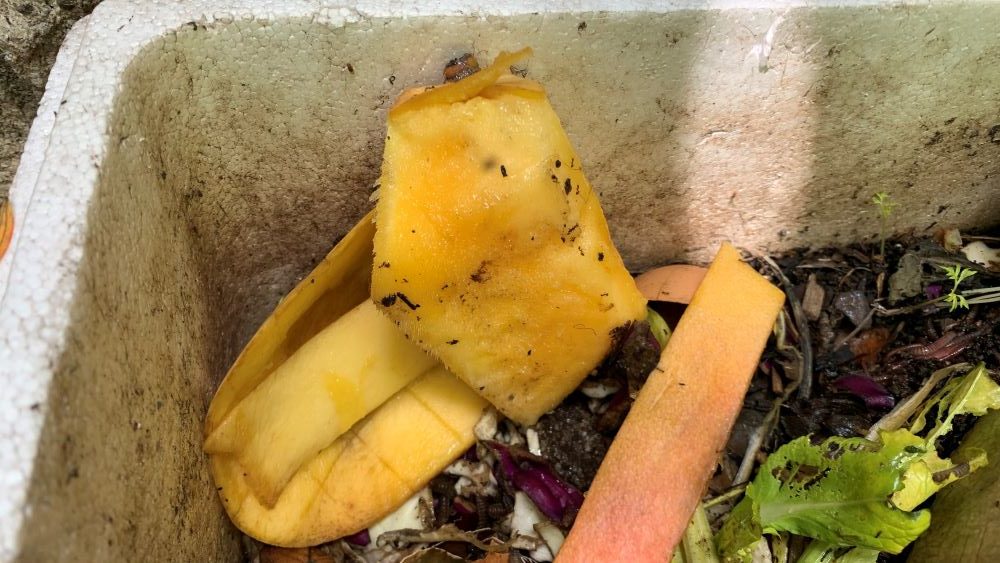
Feeding worms mango flesh
Mango flesh is soft and a delicious treat for worms. If you are not eating it yourself or if the mango has started rotting then you can take the flesh and feed it to your worms. If you have a large amount of mango then it is best to cut it up into smaller pieces.
A worm bin that is larger can take up to 2 mangoes at a time. Wait until the worms have broken down the two mangoes before adding more. This will prevent the worm bin from becoming too wet as the excess moisture comes out of the mango.
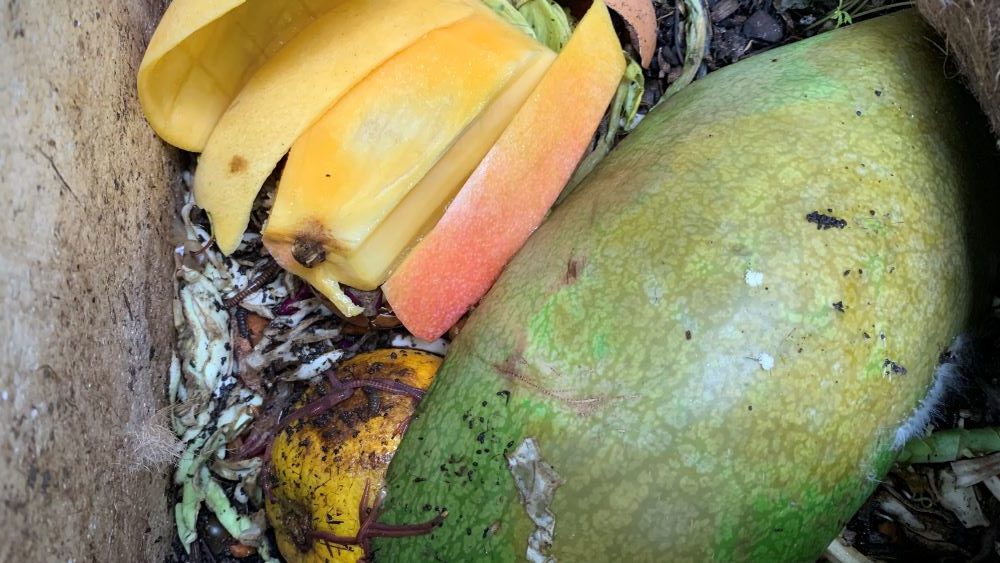
What happens when you feed mango to worms
Here is what happens when you feed mango to worms in your worm bin. Red wigglers will eventually devour the flesh, seed and skin but here are some tips to know first.
They will eat what they like first
Worms will eat mango after they have eaten their favorite foods first. Worms love strawberries and greens so they will start with these foods before they move onto mango. All worms have their favorite foods but eventually everything will get eaten.
Worms usually start by eating fruit that has started to break down. If you add old, rotten mango they can actually start eating this first. They will break it down quickly.
When I added fresh mango straight from my fridge it took 2-3 days before the worms started to eat it. they were preoccupied with an orange and some greens that were already breaking down in the worm bin.
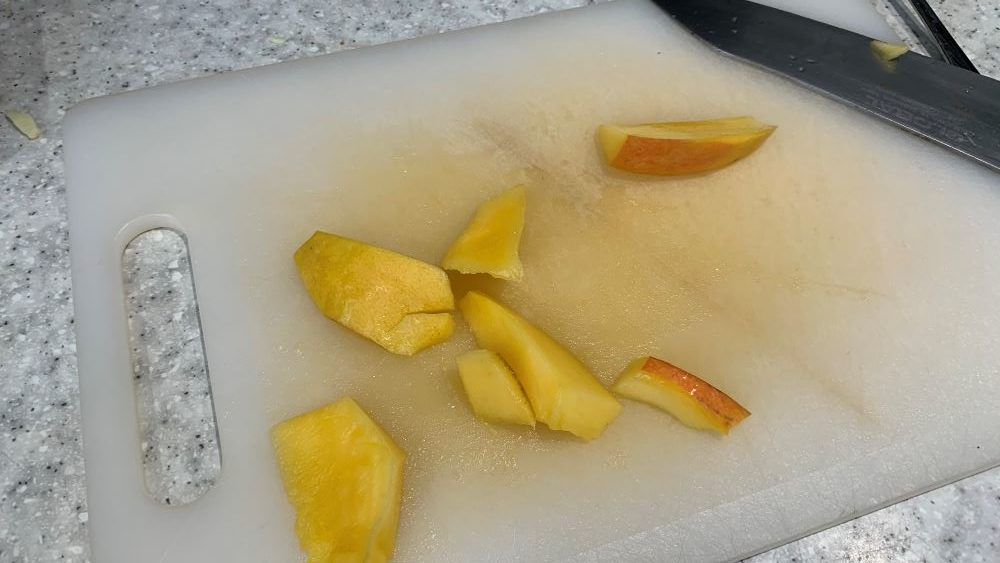
Mango can attract vinegar flies and ants
Because of the sweetness and acidity of the mango it can attract small vinegar flies and ants. While these won’t cause any harm to the worm bin they can be annoying when you lift the blanket and add more food.
How to keep ants and flies away from worm bins
If you notice that mango has started to attract flies and ants then there are some steps you can take to prevent this.
Cover it with worm castings
After you add some mango to your worm bin, then you can use a small spade to gently cover it with some of the worm castings in the bin. This will help the mango to break down quicker and also help to hide it from vinegar flies and ants.
Cover it with sugar cane mulch or straw
Another option to help to prevent ants and flies is to cover the mango with some straw or sugar cane mulch. This creates a barrier and will mean that there will be less ants and flies visiting your worm bin.
Put a worm blanket on
The final step to protect your worm bin from flies and ants after adding mango is to put the worm blanket on. You can use a specially made worm blanket made from natural fibers or a free alternative like newspaper or cardboard.
For more on worm blankets check out my previous article here: Alternatives to worm blankets | Free Ways to Cover Worm Farms
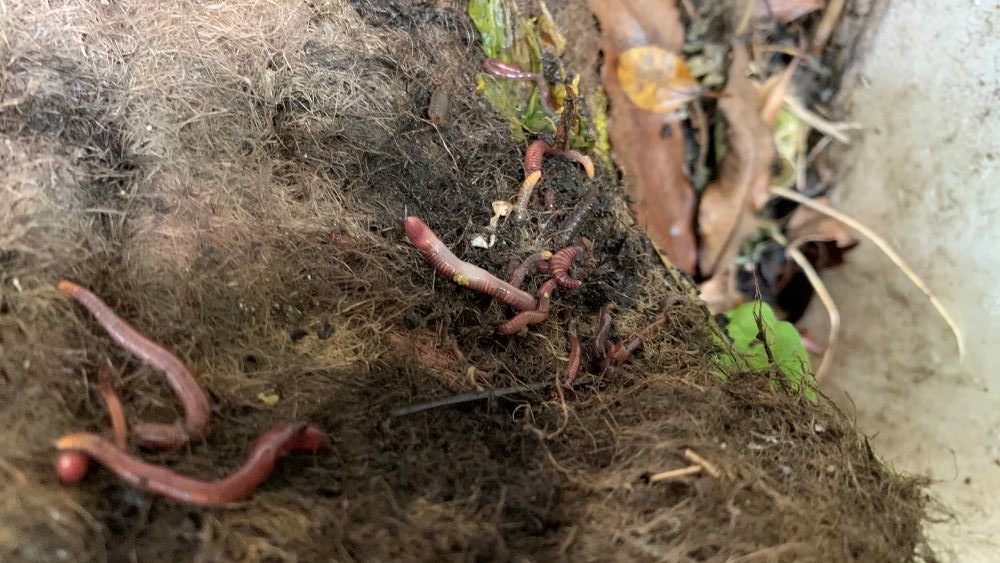
Mix through dry materials
After covering the worm farm with straw and a blanket you can also balance the moisture levels with some more dry materials to create some variety for your worms. Mix through dry fall leaves, old bark mulch, tree trimmings or bark pieces.
Worms love to eat worm bedding so balance out the moisture and acidity from the fruit by topping out with the dry materials.

Feeding worms mango | Summary
Mango is the perfect food for worms so if you have leftover skin or seeds you can add them straight to the worm bin. Cover the mango with straw or other dry bedding material to help to deter ants and flies. Mango contains a lot of moisture so absorb it with straw and add a worm blanket to protect your worms.
Happy worm farming.
I am an accredited practicing dietitian, experienced gardener and a dedicated cook. I love writing and sharing my experience so you can learn from my successes and mistakes.
